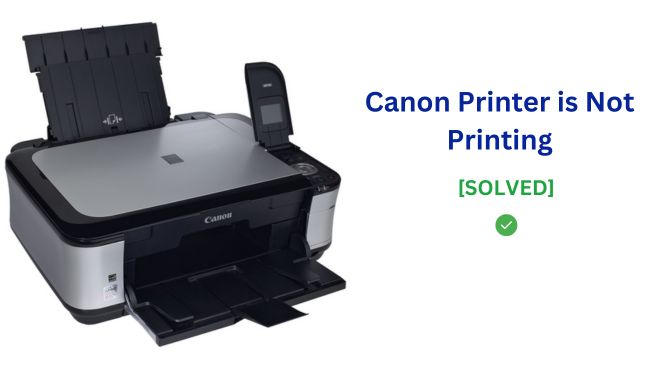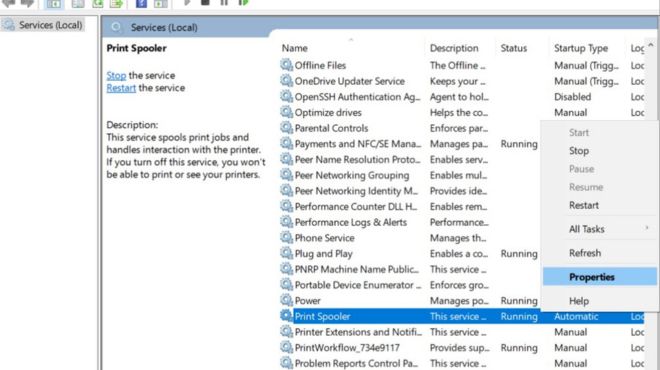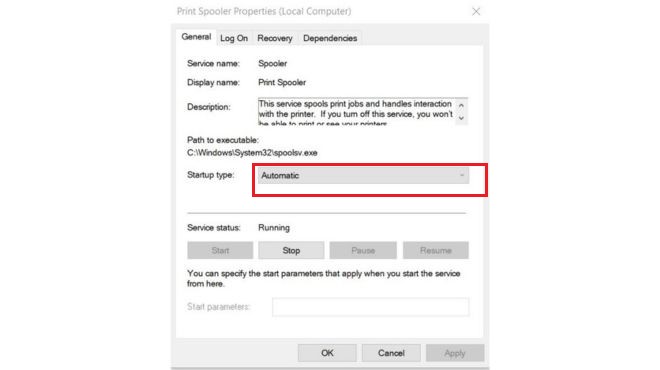Most of us have experienced Canon printer issues that suddenly block printing for no apparent reason.
Many Canon printer issues can be easily resolved by first checking that the printer is powered on and out of sleep mode, inspecting all cable connections, and clearing any debris or paper jams that could be interrupting smooth functioning.
It’s also important to confirm software settings like assigning the proper Canon model as the default printer and installing the most up-to-date printer drivers essential for communication between the printer and computer. Taking a methodical approach to testing connectivity and configurations helps isolate the root cause of printing failures among the most common trouble spots.

This guide will overview the most common issues that lead to printing failures and walk you through practical tips to get your Canon device back up and running.
1. Check If Printer Is in Sleep Mode
Many Canon printers will automatically enter a low-power sleep mode if they have not been used for a certain period of time. This is to conserve energy when the printer is idle. However, it means the printer may not respond right away when you try to print.
Start by checking if your printer is in sleep mode. Look for small LED indicator lights on the printer, often located near the power button. If the lights are off or pulsing slowly, then the device has probably entered energy saver mode.
- To wake the printer, quickly press the power button to turn it on. Listen for the printer to make noises indicating it is powering back on.
- Wait a minute once powered on then try printing again as normal.
With some luck, this simple step will be all that’s needed to get your printer to resume printing properly after being interrupted by sleep mode kicking in from inactivity.
Key Tip: Always check if the printer is in sleep mode as the first step when encountering issues with printing suddenly not working. Just turning it on can save having to troubleshoot other potential causes.
2. Check for Loose Cable Connections
Loose, damaged, or improperly connected cables are another common culprit for print failures. If the physical communication links between your computer and printer are disrupted, then the devices cannot relay the print commands or data needed for the printer to do its job.
Start by inspecting the cable connections to make sure they are snug and intact. This includes:
- Power cable from printer to power outlet
- USB cable if connecting to computer directly
- Ethernet network cable if connecting wirelessly
Look for loose plug connections, bent pins, frayed/cut cords, or any damage that could impair the vital physical connections. If you find a damaged cable, replace it with a working spare to resolve the issue.
Reconnecting briefly disconnected cables can also help. Unplug the cables then firmly reinsert them to enable a strong signal.
Key Tip: Always start troubleshooting printer problems by checking the cable connections first before diving into more complex solutions. Physical cable issues are among the easiest problems to identify and fix when printers won’t print.
3. Completely Reboot the Printer
If printer issues persist, try fully power cycling the hardware:
- Turn the Canon printer off and disconnect the power cable.
- Press and hold the power button for 5 seconds to drain any residual charge.
- Leave unplugged for 2-3 minutes before reconnecting and restarting.
For network printers, also reboot your wireless router:
- Turn off the router and disconnect power for 30 seconds.
- Reconnect and allow the router to fully restart.
This often resolves glitches in communication between printers and devices.
4. Troubleshoot Wireless Network Issues
With wireless printers, communication breakdowns between the printer and your connected devices are another source of disruption that can block printing.
If you have an integrated home WiFi network, you’ll want to check for potential wireless interference or connectivity issues preventing proper communication.
- On your computer/mobile device, check that you are connected to the same wireless network SSID that the printer connects to.
- Toggle turning the wireless access on and off on the problem devices to force them to freshly reconnect.
- Also consider physically moving devices closer together or to new locations to improve the wireless signal strength.
- Check for objects that could block signal like large electronics or metal appliances.
- WiFi signals can also get disrupted by competing signals from neighbors. Adjust WiFi channels on the router if needed.
Key Tip: Wireless network problems are tricky because the printer may appear connected but still not print. Verify devices show strong connectivity to the printer network to isolate wireless issues.
5. Check for Paper Jams Stopping the Printer
Physical paper jams inside the printer are another inconvenient issue that can suddenly block printing. If loose paper or debris gets stuck in the printer mechanisms, it prevents the hardware from properly feeding sheets through.
Signs of a paper jam include the printer starting to pull paper through then stopping abruptly without printing. Or you may hear grinding noises from paper tangled where it shouldn’t be.
To fix, open the access doors of the printer and carefully remove any jammed paper. Inspect rollers and empty paper trays for any additional debris. Refill printer paper in the trays once clear.
Power cycle the printer to reset its mechanisms now that jams have been cleared. Test with a fresh print job afterwards to confirm smooth functioning again. Consider updating printer drivers as well for maximum reliability.
Key Tip: When printers start feeding then stop abruptly, paper jams are often the issue. Clear any stuck sheets inside to get smooth printing going again.
6. Check Printer Configuration And Settings
Printers rely on default system settings to know where to route print jobs. If these configurations get changed or are set up incorrectly, your computer may attempt to send print jobs to another device.

Double check that your Canon printer is set as the Default Printer in your operating system settings:
- Navigate to Devices/Printers menu
- Right click on your Canon printer
- Confirm the option “Set As Default Printer” is enabled
Also open printing preferences and ensure the correct Canon print service is enabled rather than an alternate option.
Finally, toggle off then back on the default printer setting for your Canon model printer just to force your system to freshly reconnect properly. Retry printing afterward to give the changes time to update correctly.
Key Tip: It’s easy to accidentally assign print jobs to another printer if your default settings get switched. Verify your Canon model shows as the selected default printer.
7. Clear the Stuck Print Queue
If you have gone through all the connectivity, settings, and maintenance tips but your Canon printer still fails to print, the print queue itself may have become backed up or corrupted.
The print queue is where print jobs wait in line to be processed. Sometimes errors can cause this queue to jam and prevent proper sending of documents. Clearing it can fix stubborn printing problems:
On Windows:
- Access the Windows Services menu and stop the Print Spooler service. This halts queued print jobs.
- Delete all temporary printer files stored in the system’s spool folder. This erases any corrupted job data.
- Re-enable the Print Spooler to fresh start the queue. Test printing again.
On Mac:
- Go to System Preferences then Printers & Scanners to manage print jobs.
- Delete any queued jobs for your Canon printer. This wipes any stuck incomplete prints.
- Send a fresh print job and check if it now works.
Taking these steps to purge and restart the print queue often resolves persistent printing problems caused by errors desyncing communication between devices.
8. Reset the Windows Print Software
- Open the Windows Services manager.
- Find the Print Spooler service, right click and select Restart to reload the print management system.

Also set Print Spooler to always start Automatically on reboot.

Resetting both printer hardware and the Windows print software re-establishes the connection cleanly for more stable performance.
9. Update Printer Drivers
Outdated printer drivers can also be a sneaky culprit of printer errors. Canon printers rely on drivers to translate print commands from your computer’s operating system into instructions the printer hardware understands.
Over time, bugs arise, new OS updates emerge, or printer firmware changes. This can cause older drivers to lose sync and no longer communicate properly with connected devices to enable printing.
Updating to the latest printer driver version helps resolve this issue:
- Open Windows Device Manager
- Expand the printers list and right-click on your Canon printer
- Select “Update driver” to fetch most recent driver from Canon
- Follow prompts to install newest available printer driver
After updating, test printing once more. Updated drivers help align communication between printer and computer so jobs can process smoothly.
Key Tip: When printers stop working suddenly, out-of-date drivers are often the issue. Always keep your Canon printer driver up-to-date for maximum compatibility.
In Summary
Troubleshooting a Canon printer that won’t print can seem frustrating at first. But in most cases, the issues stem from a handful of common causes like power, connections, settings, or outdated software.
First, check for simple explanations:
- Is the printer powered on and out of sleep mode?
- Are cable connections firmly plugged into the proper ports?
- Does any loose paper or debris need cleaned out internally?
Also confirm software settings are configured correctly:
- Is the right Canon model set as your system’s default printer?
- Are printer drivers fully up-to-date from the manufacturer?
Addressing these basic connectivity, power, physical, and software settings first will resolve most situations of printers not printing. Overall, methodically testing each factor improves your chances of quickly zeroing in on the specific cause. Patience and slowly eliminating these common potential culprits can get you back to smooth wireless printing faster.
For complicated or printer-specific issues, always check Canon’s support site as well for model documentation and further troubleshooting tips. But some experimentation around the connectivity and software alignments outlined here provides an excellent starting point. Stick with it and best of luck getting that important document to start printing!
